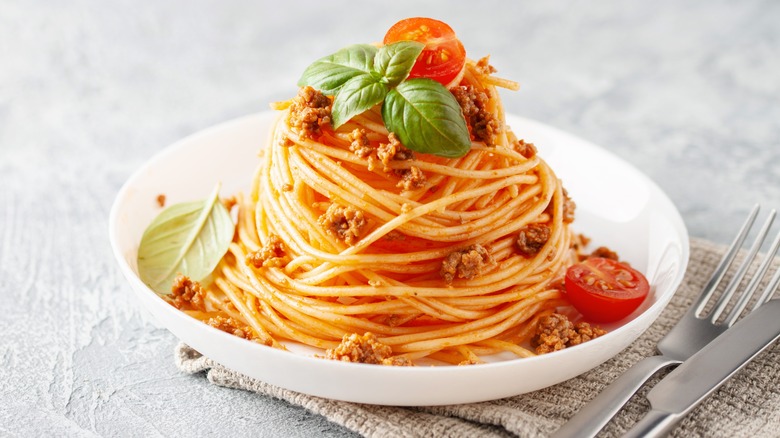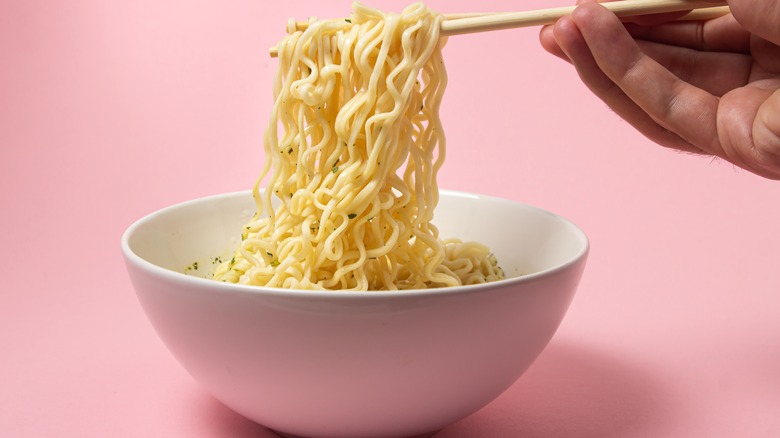What's The Actual Difference Between Spaghetti And Noodles?
We're willing to bet that someone out there has probably walked into a grocery store, picked up a box of spaghetti, and tossed it in a spicy ginger soy dressing at least once in their lifetime. Elsewhere in another kitchen, someone has dumped a pack of noodles into a pot of simmering tomato sauce and decked it with cheese. The results in both kitchens are the same: a terrible mishmash of ingredients that look like they should work together but for some reason, they don't. Fret not, it's an understandable mix-up. Noodles and spaghetti look and feel similar but they couldn't be more different.
While noodles are believed to have originated in China, spaghetti is a type of pasta that is popular in Italy — but they both have murky origins. Although some believe that Italy's spaghetti was the first example of a noodle-like dish, scientists discovered a bowl of noodles in China dating back 4,000 years, making China the birthplace of the world's first noodle (via National Geographic). Theories claim that the Venetian merchant Marco Polo found the noodle in China on one of his travels and took it back to Italy, giving rise to strips of pasta dough like spaghetti (via SBS).
Regardless of whether spaghetti is simply an Italian noodle or an entirely separate thing with no relation to Asia, the fact remains that noodles and spaghetti are prepared and eaten very differently today.
Spaghetti and noodles have different preparations
Although spaghetti and noodles look similar and are long strips of cylindrical-shaped dough, there are subtle differences between the two. Chefs tell Eat This, Not That! that spaghetti is typically made with wheat flour or durum wheat, and with or without eggs. Noodles, however, can be made from all sorts of ingredients like buckwheat, rice, mung bean starch, wheat, and eggs.
Because of the difference in ingredients, the texture and preparation of different types of noodles and spaghetti differ greatly. While both are boiled in liquids, spaghetti is mostly cooked al dente and served with herbs, cheese, and sauces — where it tends to be the star of the show in Italian pasta dishes. Noodles, on the other hand, can be the main ingredient of a dish or one of several different components in dishes, like ramen and noodle salads. Noodles can have a soft and chewy texture or be stretchy but firm. Unlike spaghetti, noodles are also served fried or stir-fried in dishes like chow mien.
Besides the subtle differences in appearance, ingredients, and drastically different preparations, puzzled Redditors wonder why spaghetti can't technically be called noodles. "Pasta is Italian noodles, spaghetti is pasta, therefore spaghetti is a noodle," pondered one user. Another person suggested that they may essentially be the same thing invented in different parts of the world for different purposes. As such, it might be wise to stick to noodles for Asian dishes and spaghetti for Italian meals.

